Considering leaving your role in brand marketing to work at a marketing agency? As with most things, there are pros and cons to both sides of the marketing spectrum. Working in marketing for a specific brand, you will acquire in-depth knowledge of your product and understand the company inside and out. In contrast, working at an agency you must be able to work many brands across various industries. Agency marketing does not need as in-depth knowledge as the brand side, because agencies have multiple clients and it would be unrealistic to have the same level of brand knowledge without being a member of the company. Agencies operate faster and with set systems in place to ensure smooth operations amongst multiple clients and employees. Making the change from brand to agency, you’re bound to run into several obstacles and learning curves. Here are the six biggest changes when transitioning from brand side to agency side.
1 Systems and SOPs Are Crucial
When managing many clients, having standards of procedure (SOP) and internal systems are crucial. Unlike brand side marketing, agencies deal with multiple clients and multiple campaigns for each of them. Having an agency-wide set of expectations and procedures for approaching projects is what enables agencies to work efficiently. The levels of staff present many verticals for each brand, including account managers, multimedia specialists, and coordinators. All these individuals are expected to act according to a single SOP and use the same tools to maximize effectiveness. Many individuals who are working brand-side are not accustomed to using social tools and platforms to complete their work. Making the change from a single brand to an agency is likely to come with a learning curve.
“Going from brand to agency, I noticed how crucial platforms such as Basecamp and Google Drive were to create an effective workflow. My transition from brand side (working in a team of two) to an agency with a team of 12 involved a lot more cross-communication and collaborative projects. Understanding the SOP’s allowed me to step into the team workflow much faster than trying to learn processes from the ground up. Although it is much more fast-paced, the online platforms and agency procedures used at Jelly Marketing created streamlined efforts and enabled clear communication across the entire staff.” – Emma Whiten, PR Coordinator at Jelly Marketing.
2. Introduction of Multiple Bosses
One key factor that sets agencies apart from brands would be the multiple levels of reporting required to allow an agency to work effectively. Working brand side, you will have several levels of management, including the supervisor, department manager, and possibly the company owner. Working at an agency, there are multiple levels that one must navigate through to activate a campaign. There are the agency owners and Account Managers, who act as the superiors to other roles, as well as coordinators, multimedia specialists, and support staff. The account managers are direct contact with the client and in charge of all aspects of that particular account. Individuals working at an agency must report all work to the account manager assigned to the client. This comes with both pros and cons, as each account manager will be very different from one another. Standards of procedures help make sure that all account managers act accordingly, but there is still the human side of working as a team. Learning to navigate different personalities and expectations is a large part of adapting to agency work.
“For myself, having to learn the personalities of each account manager and the levels of reporting was a huge shift. As someone who was used to a single supervisor, I had to work on modifying my work to fit a few different expectations. Although it is something I am always working on with new clients, I find it keeps things fresh and prevents things from getting repetitive. An unexpected benefit I found was being able to transfer ideas from one account manager to the account of another.” – Emma Whiten, PR Coordinator at Jelly Marketing.
3 – So. Many. Verticals!
Working in an agency involves navigating through verticals in a continually changing environment. The average working day an agency involves changes by the hour depending on the client’s needs and expectations. One hour could involve researching keywords for an auto shop with the next involving a press release for a Real Estate brokerage. To fit the needs of the various clients, you are changing your way of thinking, style of writing, and type of service provided. Staying on top of the job requires knowledge and understanding of current trends, newsworthy events, and happenings in multiple industries. Coordinators are always looking for new stories or angles, which they must be able to act upon. The rhythm is fast with little consistency in day to day tasks. The verticals apply not only to the services provided but to those you work with as well. Agencies deal with countless clients and employees of the brands that they manage. Learning to network and navigate through media relations, client relations, and potential audiences is a key part of what Agencies do. The more one works in the industry, the more vertices they will incorporate.
“Learning the flow and speed of agency work was the most challenging part of making the switch from brand to agency. Having only experienced the brand side of operations, I was used to only thinking about one specific industry, which I had come to know extensively. Getting used to new industries and having to take action in these industries takes a lot of research. The most challenging part would be having to do this for multiple clients at one time. Learning how to allocate time to different projects was a huge help, as well as reading blogs and news reports every morning to stay up to date on current trends.” – Emma Whiten, PR Coordinator at Jelly Marketing.
4. Finding Unique Partnership Opportunities
One benefit of working at an agency is the opportunities that come as a result of working with multiple brands. Having insider knowledge and close working relationships with a multitude of brands allows marketers to see the synergy between companies. Agencies have the unique advantage of being able to team up different clients and find internal partnership opportunities. The internal client connection is a win-win-win relationship for all clients involved, as well as the agency. These mutual benefits are important in building supportive industries and creating cross-communication between companies. A rising tide raises all boats – a perfect metaphor for the mutualistic potential amongst agency brands. Although not all brands work together, finding ways that certain companies can complement one another is a great way to create new content. Finding these relationships is no simple task, but having the inside client knowledge makes it a little bit better. Single brands can form partnerships and create cross-industry relationships, but they are built through different connections and often lack the procedural process of an agency.
“Seeing how brands can work together and partnering up surprising industries has been a favourite part of my experience working with agencies. Working on the brand side, I found arranging partnerships to be an exhausting process with lots of unanswered calls and emails. Seeing how brands fit together and being able to use internal resources to provide mutual benefits has been one of my favourite experiences working at Jelly. It takes a lot of creativity and teamwork, but there is nothing more satisfying than getting three birds with one stone.” – Emma Whiten, PR Coordinator at Jelly Marketing.
5. Deadlines Matter More than Ever
When working for brands, deadlines are considered to be more flexible and fluid. There are levels of relationships and politics that one can navigate through to delay deadlines and postpone projects. For this reason, working within the internal organization has several benefits that agencies do not. When working at an agency, deadlines are serious business. Not only do you have the account manager to respond to, but they have their own boss – the client. There are different standards and expectations in place when the project is being completed by an external party. For this reason, agencies must rely on their SOP’s and workflow systems to ensure all work is done and on time.
“In my previous experience working on the brand side, I was used to being able to change due dates based on other projects and my communication with the entire company. Making the switch to an agency was a large adjustment because I was not able to suggest new dates and move around projects to accommodate deadlines. Although it creates a larger time pressure for myself, I find it helps me get my work done much faster and removes the opportunity for procrastination.” – Emma Whiten, PR Coordinator at Jelly Marketing.
6. Continuously Learning
Last but not least, we look at the differences in learnings and how they translate in comparison to a brand and an agency. In an agency environment, you are constantly learning new industries, products, and networks. Unlike the brand side, where you know the details of a company from the inside out, agency work requires an in-depth understanding of several brands. Having to understand each industry you represent is a job of its own, involving attention to detail and continued learning. Having a diverse set of industry knowledge is beneficial because you can transfer what you have learned to new clients. There are always ways to overlap learnings to new clients across industries. Something that worked well for a construction company could be modified for a restaurant client and vice versa. Working at an agency means trying new things and using your mental toolset to apply them. Being able to translate knowledge is a great resource that marketing agencies use to their advantage.
“After my first few months working brand-side, I felt like I had established a decent understanding of the industry I was in. Working at an agency, however, has been an entirely different story. Staying up to date on new trends and continuously researching new industries are crucial to my work performance. I find the environment motivating, but it only takes a few days to fall behind in such a fast-paced environment. Working at an agency has taught me the importance of staying current and acting sooner than later. It’s a rewarding environment but one of continual learning and change.” – Emma Whiten, PR Coordinator at Jelly Marketing.
Categories:
advertising, Agency, Brands, Client, Jelly, Marketing Insights, Marketing Tips
Tags:
digital agency, marketing advice



